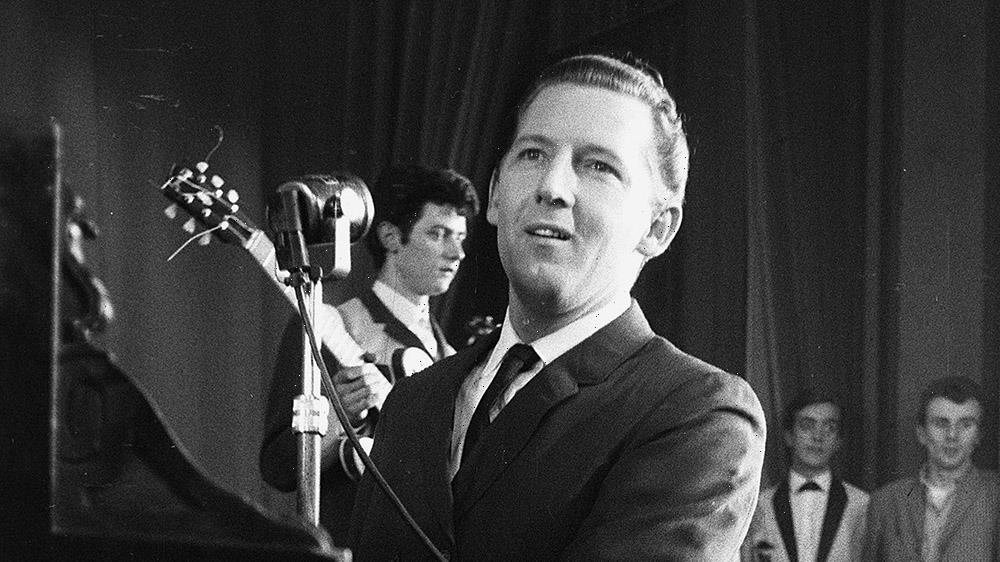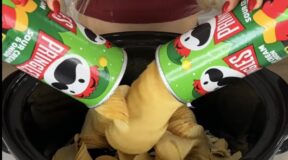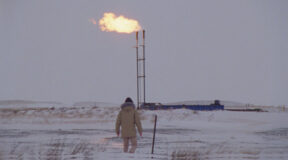Elvis Presley might have been the King, but Jerry Lee Lewis — the controversial American singer, songwriter and pianist who passed away Friday at his Mississippi home at the age of 87 — was something far more dangerous: the Killer. With that sobriquet, the wildest of O.G. rock and rollers could attack the eighty-eights with a passionate abandon, whether through the hilly traditions of honky-tonk or the fury of the then-bourgeoning field of rockabilly. As for his handsomely expressive vocals, they could be yelping, hot and incendiary or icily distant, whether it was his slowest of songs or his rapier-fast rockabilly numbers. Still, Lewis was also capable of real tenderness when it came to the most romantic of country ballads (with a few slow, drinking songs in there as well) and abiding reverence when kneeling at the hem of sacred song — remember he and firebrand televangelist Jimmy Swaggart are double first cous
Here are 15 of his biggest hits and most daring musical moments:
“Crazy Arms” (1956)
The tousle-haired Lee Lewis starts his career at Sun Records with a yelped-out version of country music songwriters Ralph Mooney and Charles Seals’ hit that all but made the career of honky-tonk crooner Ray Price earlier that same year. Jerry Lee and Co. just added a little more slap-back reverb and echo to the vocals and a hammer to his piano hand, and the Killer made it his own. A great start.
https://youtube.com/watch?v=QVO0RvU5SSk%3Fversion%3D3%26%23038%3Brel%3D1%26%23038%3Bshowsearch%3D0%26%23038%3Bshowinfo%3D1%26%23038%3Biv_load_policy%3D1%26%23038%3Bfs%3D1%26%23038%3Bhl%3Den-US%26%23038%3Bautohide%3D2%26%23038%3Bwmode%3Dtransparent
“You’re the Only Star in My Blue Heaven” (1956)
As part of the legendary, yet still mysterious December 1956 impromptu meeting of Lewis, Elvis Presley, Carl Perkins and Johnny Cash in Sun Studios forever known as “the Million Dollar Quartet,” the young studio pianist comes out smelling the rosiest. Not only does he add his high, warbling vocals to Presley’s low croon on several duets, Jerry turns wholesome Gene Autry’s “You’re the Only Star in My Blue Heaven” into a near-yodeling hillbilly rave-up far more lascivious than the Singing Cowboy’s even hinted at.
https://youtube.com/watch?v=0Sami2q7J2Q%3Fversion%3D3%26%23038%3Brel%3D1%26%23038%3Bshowsearch%3D0%26%23038%3Bshowinfo%3D1%26%23038%3Biv_load_policy%3D1%26%23038%3Bfs%3D1%26%23038%3Bhl%3Den-US%26%23038%3Bautohide%3D2%26%23038%3Bwmode%3Dtransparent
“Whole Lotta Shakin’ Goin’ On” (1957)
Dave “Curlee” Williams wrote this early R&B barnstormer with huffing, puffing Big Maybelle blowing the house down in 1955 for the Okeh label. But in 1957, Lewis and Sun producer Jack Clement sped up the track, added space to the arrangement along with an offbeat, hard boogie woogie piano, and didn’t so much make the raw slab of rockabilly “shake” as explode. Extra credit to drummer J.M. Van Eaton (high in the mix) and guitarist Roland James (low in the mix).
https://youtube.com/watch?v=Fw7SBF-35Es%3Fversion%3D3%26%23038%3Brel%3D1%26%23038%3Bshowsearch%3D0%26%23038%3Bshowinfo%3D1%26%23038%3Biv_load_policy%3D1%26%23038%3Bfs%3D1%26%23038%3Bhl%3Den-US%26%23038%3Bautohide%3D2%26%23038%3Bwmode%3Dtransparent
“Great Balls of Fire” (1957)
Another great Black R&B songwriter of the time, Otis Blackwell (with Jack Hammer) penned what would become Lewis’ second signature hit, not only of the year, but his long, wild life. Featured in the 1957 movie “Jamboree,” Jerry is even more confident as a vocalist, taking advantage of rockabilly’s reliance on reverb for quick yodels, whoops and hollers while playing up the stride of his piano with pride.
https://youtube.com/watch?v=F569_t2jCio%3Fversion%3D3%26%23038%3Brel%3D1%26%23038%3Bshowsearch%3D0%26%23038%3Bshowinfo%3D1%26%23038%3Biv_load_policy%3D1%26%23038%3Bfs%3D1%26%23038%3Bhl%3Den-US%26%23038%3Bautohide%3D2%26%23038%3Bwmode%3Dtransparent
“Breathless” (1958)
This author’s personal JLL favorite, the Otis Blackwell-penned track is hot rockabilly at its peak, even if the singer’s echo usual Sun Studio FX are tamped down this time around. Instead, Lewis uses his own vibrato in a back-and-forth, herky-jerky manner in its first verse, adds guttural growls and whispers along the way and prompts Billy Lee Riley to pluck out one tangy guitar solo before the track races to close. (Props to the L.A. band X for their fiery take on the song “Breathless” from the 1983 Godard film remake of the same name.)
https://youtube.com/watch?v=r_zLPN0YcrA%3Fversion%3D3%26%23038%3Brel%3D1%26%23038%3Bshowsearch%3D0%26%23038%3Bshowinfo%3D1%26%23038%3Biv_load_policy%3D1%26%23038%3Bfs%3D1%26%23038%3Bhl%3Den-US%26%23038%3Bautohide%3D2%26%23038%3Bwmode%3Dtransparent
“Mean Woman Blues” Live at the Star-Club (1964)
After 1958’s news of marrying a 13-year-old Myra Gale Brown slowed his career in and his Sun label contract ended in 1963, the Killer hit the road harder, wilder and with more incendiary force than ever before. One such night was captured at Hamburg’s legendary Beatles incubator, the Star-Club, in 1964 with the Nashville Teens trio. The group pummels through “Mean Woman Blues,” “Your Cheatin’ Heart” and more, and blazing amphetamine vigor of Lewis’ voice, to say nothing of his rapid-fire bluesy piano riffs, is worth the price of admission. If you had to boil one whole ferocious gig down into one complex and intense encapsulation, “Mean Woman Blues” is that moment.
https://youtube.com/watch?v=lQfUeLUgjFA%3Fversion%3D3%26%23038%3Brel%3D1%26%23038%3Bshowsearch%3D0%26%23038%3Bshowinfo%3D1%26%23038%3Biv_load_policy%3D1%26%23038%3Bfs%3D1%26%23038%3Bhl%3Den-US%26%23038%3Bautohide%3D2%26%23038%3Bwmode%3Dtransparent
“Another Place, Another Time” (1968)
After leaving Sun Records for the Smash label in 1963, Lewis didn’t really win find himself with many hits until, surprisingly, he got to the 1968 album “Another Place, Another Time” and its raw and soulful, stripped-down title song by songwriter Jerry Chestnut. A shudderingly low-voiced Lewis could unnerve Jonny Cash with this dark display, and the song itself was suggested by legendary country producer Eddie Kilroy as Lee Lewis’ entrée into a more modern country sound.
“When He Walks on You (Like You Have Walked on Me)” (1971)
Several years into Lewis’ reign on the country charts, songwriter Dallas Green (the man behind the 1957 hit “Alley Oop” along with songs for Ferlin Husky, Merle Haggard and Charlie Pride) and A.L. Owens lent their charms to this pensive, pedal steel-slickened song of love, loss and deep, deep spitefulness.
“Touching Home” (1971)
Another lonesome Green and Owen ballad, this time with just a few more fiddles and a lot more honky-tonk in Lewis’ piano playing (to say nothing of his tear in his beer vocal accents). Only this time, Lewis takes a page from his Sun days’ brethren Elvis Presley, and utilizes the skills of gorgeously opulent, background vocalists The Jordinaires and The Nashville Sounds to pillow Lewis’ craggy voice in a cushion of harmony.
https://youtube.com/watch?v=yJkh-8ZO4yQ%3Fversion%3D3%26%23038%3Brel%3D1%26%23038%3Bshowsearch%3D0%26%23038%3Bshowinfo%3D1%26%23038%3Biv_load_policy%3D1%26%23038%3Bfs%3D1%26%23038%3Bhl%3Den-US%26%23038%3Bautohide%3D2%26%23038%3Bwmode%3Dtransparent
“Parting is Such Sweet Sorrow” (1972)
Jerry Lee’s songwriting sister Linda Gail Lewis co-wrote this honky-tonk ballad, and the Killer sounds as if he’s having as much of a great time tickling the ivories as he is menacingly sing-speaking its lyrics. And when he calls out the word “neighborhood,” it is more spine-tingling than Dennis Hopper doing the same in “Blue Velvet.”
“Middle Age Crazy” (1977)
Lee Lewis is buying Porches, tight embroidered jeans and dealing with the age of 40 just to prove that he can, in this surprise Top Ten country ballad, with just a hint of a classical melody, all written by Sonny Throckmorton.
https://www.youtube.com/watch?v=6jNzQA5V5M
“Good Time Charlie’s Got the Blues” (1980)
Backed by a lush and buoyant orchestra of fiddlers and yawning pedal steels, Lewis lowers his country-accented voice an octave, toys with his piano as if he’s stroking a lover’s hair and finds a bluesy soulful way into songwriter Danny O’Keefe’s classic without losing an ounce of honky-tonk savoir faire.
https://youtube.com/watch?v=mTuPFzUZLjo%3Fversion%3D3%26%23038%3Brel%3D1%26%23038%3Bshowsearch%3D0%26%23038%3Bshowinfo%3D1%26%23038%3Biv_load_policy%3D1%26%23038%3Bfs%3D1%26%23038%3Bhl%3Den-US%26%23038%3Bautohide%3D2%26%23038%3Bwmode%3Dtransparent
“Somewhere Over the Rainbow” (1980)
This is no walk through the Yellow Brick Road. One of Lewis’ most haunting set of rough-voiced vocals and playful, passionate piano solos over a rich string section.
https://www.youtube.com/watch?v=p1t8a5uzb5g
“It Was the Whiskey Talkin’ (Not Me)” (1995)
Produced by eccentric pop’s best friend, Andy Paley, Lee Lewis’ 1995 album “Young Blood” is full of Jerry Lee’s fire and dynamite of yore, with the backing of friends such as James Burton and NRBQ’s Big Al Anderson along with Jerry’s longtime guitarist Kenny Lovelace along for the ride. However, “Whiskey Talkin’” finds the vocalist at his most robustly boastful and lusty. “If I brag too loud, and act too proud, don’t blame ole Jerry Lee,” he sings at the start, all contrite, before asking his bartender at song’s end for another drink.
https://youtube.com/watch?v=WqANsJ2tmIQ%3Fversion%3D3%26%23038%3Brel%3D1%26%23038%3Bshowsearch%3D0%26%23038%3Bshowinfo%3D1%26%23038%3Biv_load_policy%3D1%26%23038%3Bfs%3D1%26%23038%3Bhl%3Den-US%26%23038%3Bautohide%3D2%26%23038%3Bwmode%3Dtransparent
“Mean Old Man” (2010)
Jerry Lee Lewis always loved a good Kris Kristofferson song — check 1971’s “Touching Home” and his take on “Help Me Make It Through the Night” for a good reference points. The two have a “Live in Nashville” (1982) video together that’s rough and tender, and when Jerry was inducted into the Country Music Hall of Fame in Nashville last week it was Kristofferson who accepted the medallion on Lewis’ behalf. “Mean Old Man” starts off slow and grouchy, but builds quickly into a fast shuffling, hiccupping guitar-filled rave up with Lewis’ low, dark vocals flush in the center of the rumbling, warm mix.
Read More About:
Source: Read Full Article





